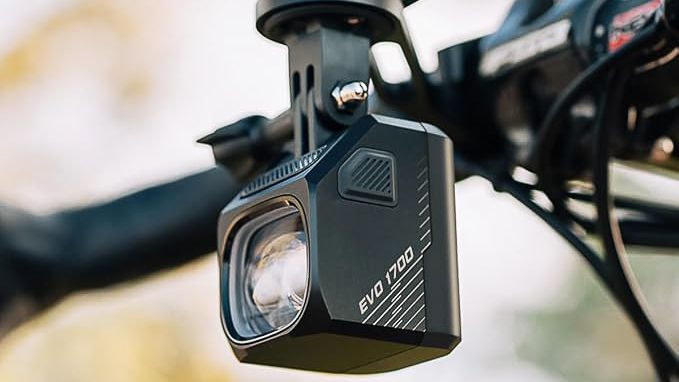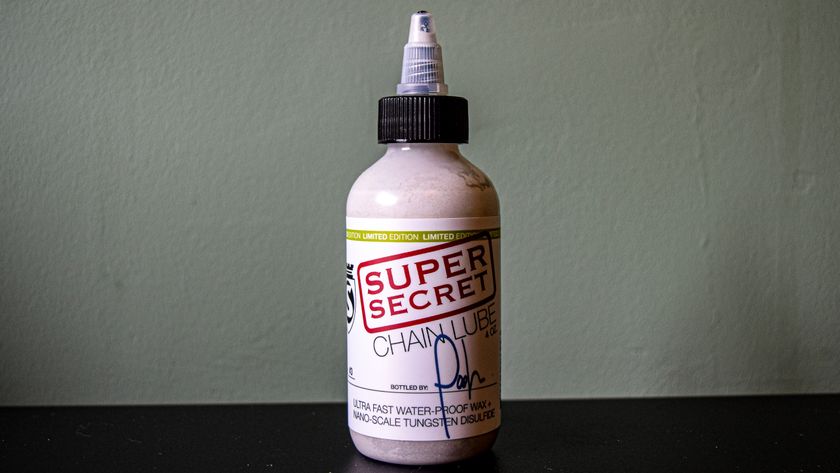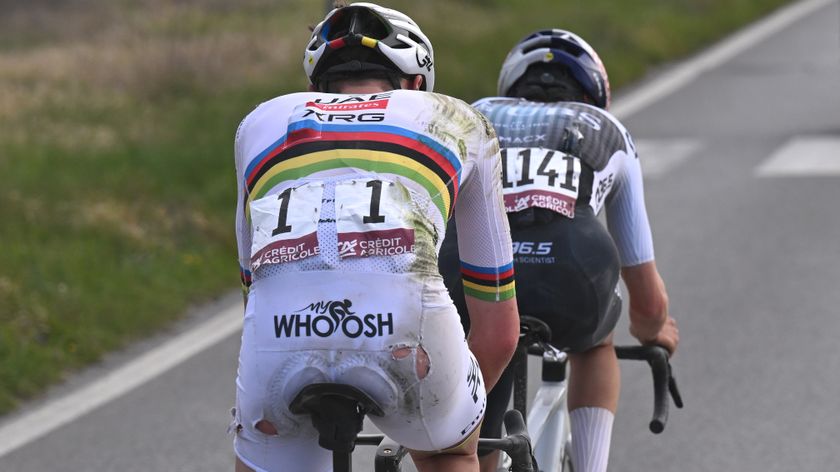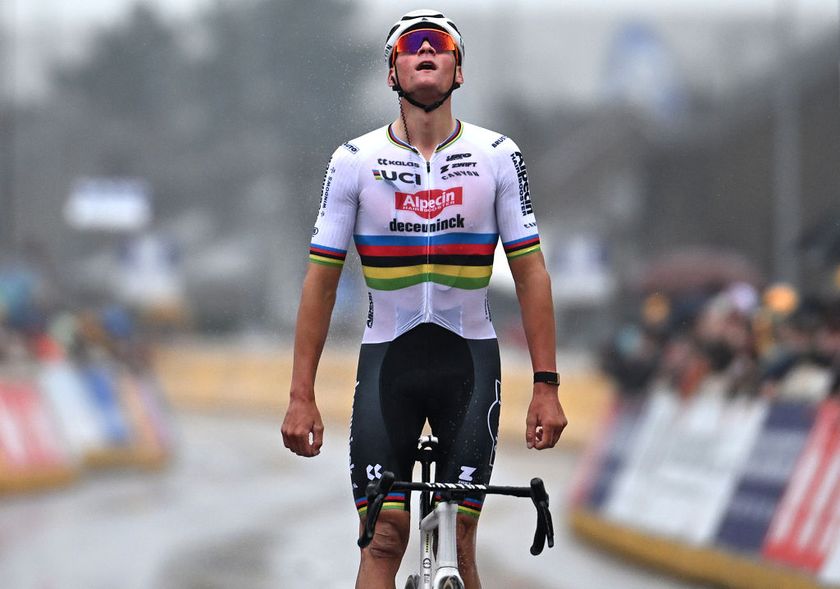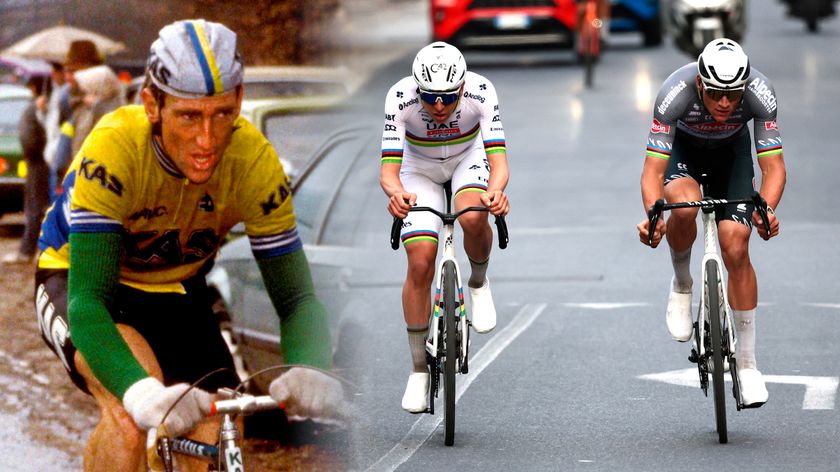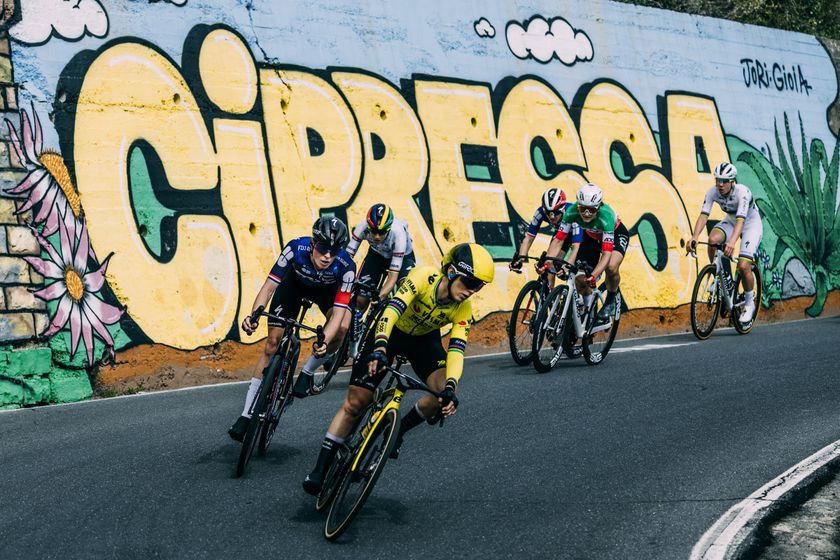Tubeless tires for cyclo-cross
Tips and guidelines for going without glue








This article originally published on BikeRadar
Traditional tubular tires continue to rule the roost at the top levels of cyclo-cross racing, and for good reason: the wheels and tires are lighter, the casings tend to be suppler and do a better able of conforming to the ground. Most importantly, they can be reliably run at traction-enhancing pressures that typical clinchers can only dream of – sub-20psi in some cases.
For those who can't be bothered with the hassle and expense of tubulars, though, tubeless setups are a tempting alternative with no tubes to pinch and the ability to swap tires quickly with changing course conditions. Even better, running sealant automatically repairs small punctures, too, meaning fewer visits to the pits.
"I was a little skeptical at first but I haven’t had any issues with burping or rolling any tires, and that was definitely a concern at speed when you've got just 28 or 25psi," said Jake Wells, who made the move to the Stan's NoTubes factory cyclo-cross team and Kenda tubeless clinchers in 2011, after racing on tubulars for years.
"I'm running the exact same pressures as I was running on tubulars," he continued to BikeRadar. "I don't like my tires to be really foldy anyway – 24psi is about as low as I like to go, but some of the girls on the team are running around 22 or 24psi pretty consistently.
"[Tubeless] makes it a much more versatile setup, especially for someone who doesn't have a truck full of wheels and tires ready to go. I've got two bikes and I just bring extra tires in my bike bag."
Tubeless options are more plentiful than ever these days – and some of them even work. Here are some tips, guidelines, and words of caution to help you ditch the tubes.
Get The Leadout Newsletter
The latest race content, interviews, features, reviews and expert buying guides, direct to your inbox!
It's all about the fit
A tubular tire is (hopefully) securely glued onto a rim and a tubeless mountain bike tire's high volume produces enough force to hold the tire and rim together firmly. But a tubeless cyclo-cross tire enjoys neither of those benefits, occupying an unfortunate no man's land in terms of reliability.
As such, it's all about the quality of the interface between the rim and tire. Tighter is better, because the physical interlocking of the two pieces is nearly the only thing holding the system together. Good omens include reassuringly loud 'pops' during inflation (as the bead seats onto the rim), tires that easily inflate with a floor pump, and tires that are difficult to remove once deflated.
Not surprisingly, we've had the most consistent good luck using rims and tires that are specifically intended for tubeless applications, such as wheels and rims from Stan's NoTubes, Shimano, Easton, Bontrager, and Campagnolo/Fulcrum mated with tubeless-ready tires from Vittoria, Kenda, and Hutchinson plus about 30cc of latex-based sealant.
In the case of the Shimano, Easton, Bontrager, and Campagnolo/Fulcrum wheels – or any others that display the 'Road Tubeless' badge – it's a matter of the rim and bead dimensions being designed to work and fit tightly together, with purpose-built geometry on both sides of the interface.
Stan's NoTubes and American Classic rims, on the other hand, use a bead hook diameter that's slightly larger than standard, resulting in a tighter-than-usual joint and the extra security that tubeless setups require.
We've also noted better tire security (and lower successful operating pressures) on rims with wider profiles. The extra sidewall support helps combat tire roll at lower pressures, and the broader foundation also opens up the tire to create a bigger footprint and more air volume – which simultaneously creates more retention force for a given inflation pressure.
Non-tubeless-specific combinations can work, too, but it's a far less consistent pairing that needs to be evaluated on a case-by-case basis. Skinwall tires should generally be avoided for tubeless applications, regardless of the fit, as the sidewalls are usually too porous to seal.
In general, here is a good rule of thumb: if the wheel and tire combination you're trying to set up tubeless is very easy to install (or, worse, essentially tries to fall off the rim) or virtually impossible to inflate even with an air compressor, stop now and continue reading.
Making it work
A little diligence can turn a marginal setup into one that's much more reliable – but, again, the key is the quality of the fit. The usual culprit is either a tire that's too loose or a rim that's effectively too small. Trying other brands of tires will confirm if your problem is the former, at which point we advise cutting your losses. Conversely, building up the rim bed to increase its effective diameter is comparatively easy.
Pre-formed rim strips can get the job done (such as the molded rubber rim strips from Stan's NoTubes) but we prefer NoTubes' airtight yellow tape, which is offered in multiple widths to provide a proper edge-to-edge fill. Plus, since it's very thin and comes on a roll, you can add only as much as you need. Simply apply layers of tape to the rim bed until the tire sits reasonably snug without air, making sure to overlap the tape at the valve hole on each pass.
Once the rim bed is built up to a suitably large diameter, the tire might be hard to install (a reassuring sign) but it should reward your inflation efforts with that series of 'pops' we described earlier.
Another alternative is to use your own airtight, bead-to-bead, rubber rim strip using a 20in-diameter inner tube – preferably one with a removable Presta valve core. Make sure to lay down a non-stretch rim strip first, if your rim has conventional spoke holes drilled.
Split the tube longitudinally down the middle, leaving the valve in the center of the resultant strip. Insert the stem into the valve hole and then stretch the tube evenly around the rim. Carefully install the tire over your homemade rim strip, inject approximately 30cc of sealant through the valve, and inflate away.
Providing the rim bed was sufficiently large in diameter to begin with, subsequent inflation should be pretty easy. But keep in mind that an initial tight fit is still critical. Otherwise, you'll have an airtight seal that's still prone to burping under load. Also, this method is a one-shot deal as it isn't likely you'll be able to reuse the strip.
Regardless of the method you choose, there are a few tricks you can use to help get the tire initially inflated. Coating the tire beads with soapy water helps create an initial seal (we keep a spray bottle filled in our workshop specifically for this purpose), and removing the valve core during inflation allows for a higher flow rate.
Yes, using an air compressor certainly makes things easier but better-fitting rim and tire combinations also tend to be easier to inflate with a conventional floor pump, which ensures a higher degree of field serviceability.
According to Mike Bush at Stan's NoTubes, CO2 cartridges should be avoided either way. They'll seat the tire but will also react with the sealant inside. Instead, he recommends using Genuine Innovations' Big Air! canisters, which are charged with compressed propane.
Hit the barriers – but check your work first
Even when tubeless cyclo-cross tires are set up optimally, they still can't match the overall performance of tubulars. However, they're a reasonable compromise for the weekend warrior and – assuming you've achieved a reliable setup – better than conventional clinchers in most respects.
We've been able to run pressures as low as the mid-20s in local races with no burping – even on a few instances when we felt the tire roll beneath us in hard corners. Thorny tracks become a non-issue, too, as the sealant inside the tire easily repairs small punctures without you having to visit the pits.
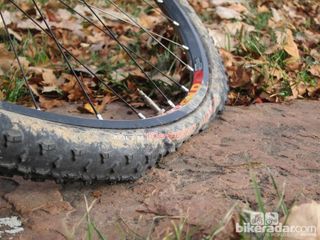
If you've done it right, the tire can fold completely without breaching the seal
That said, it's critical to check your work thoroughly before heading out, since tubeless cyclo-cross setups are still a less-than-precise science and the consequences of failure can be severe.
We recommend deflating your tire to around 10psi, placing the wheel at an angle on a surface with good grip, and then forcefully side-loading it – just as you would in a hard corner. If it holds tight without burping, you can be fairly confident you've got a good setup. If not, use at your own risk.
Words of warning
In any event, none of the above conversions are recommended for use on road tires, where proper Road Tubeless wheels and tires must be used unless you want to risk a catastrophic blowout.
Most importantly, approach the project deliberately and proceed with caution. There's no guarantee of success but the chances are good if you've got all the right ingredients: wide rims, tight tire-to-rim interfaces, and 'cross tires with tubeless-ready beads. Nail the formula and you'll enjoy lower rotating weight, fewer flats, better traction, and improved ride quality as compared to conventional clinchers, all without having to resort to tubulars – yet.
